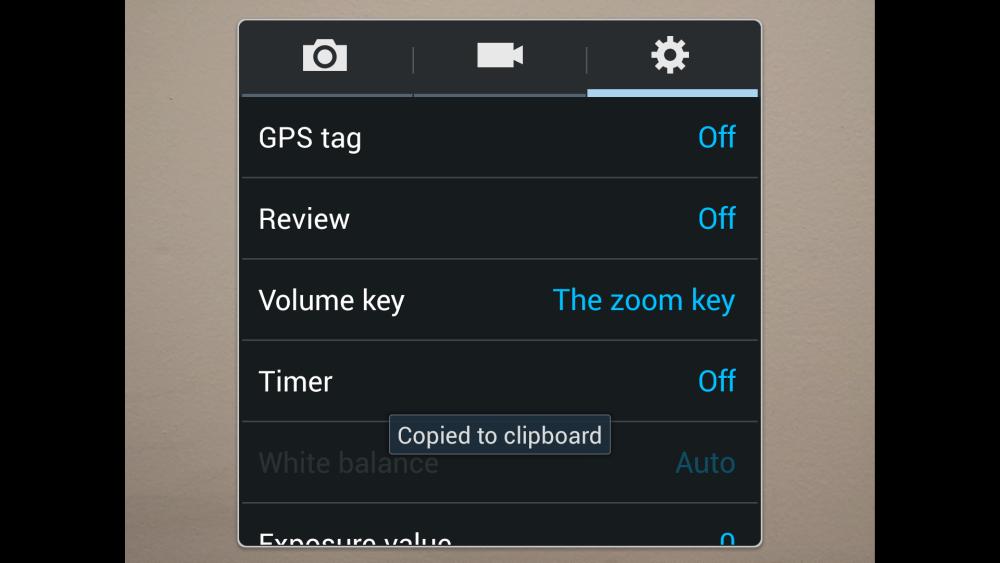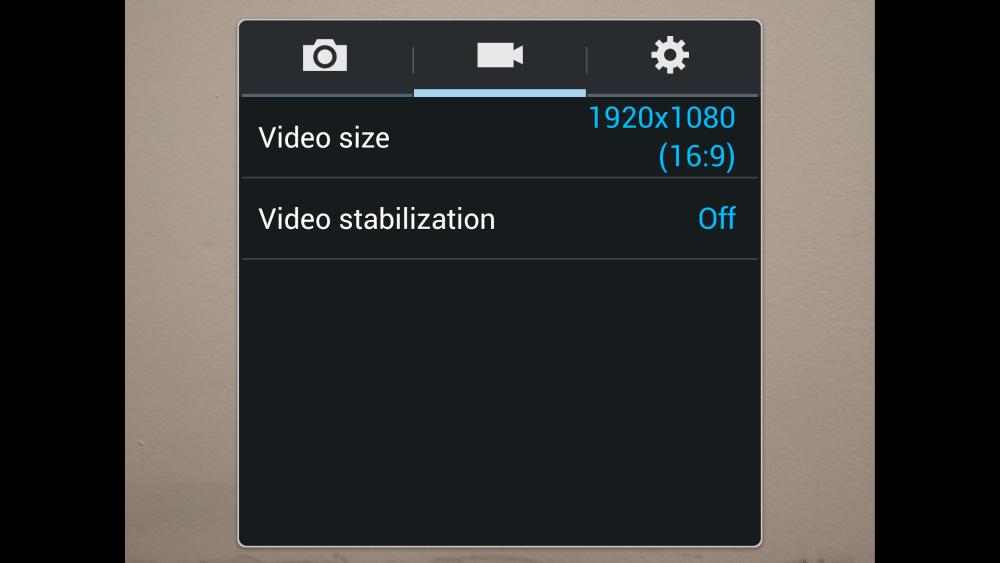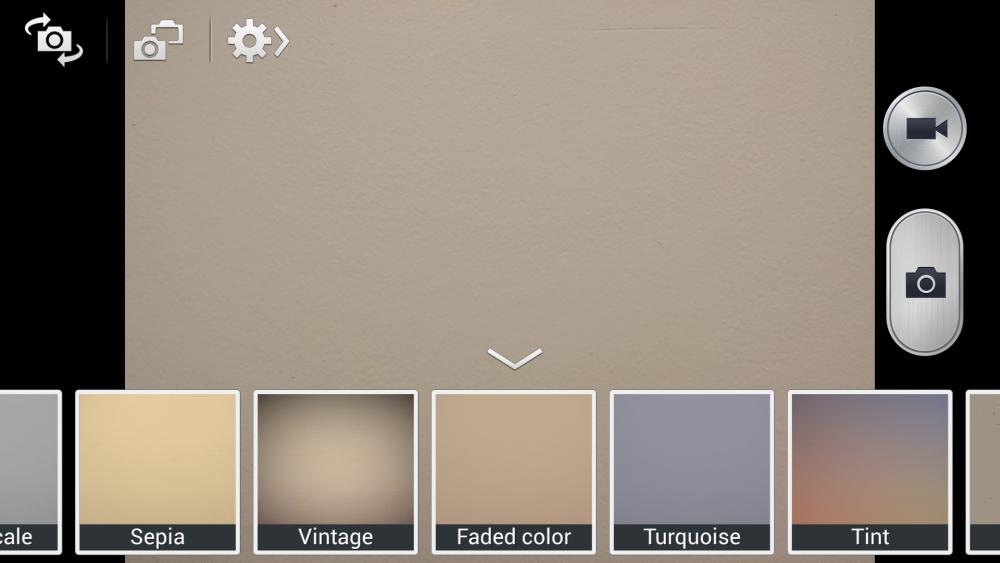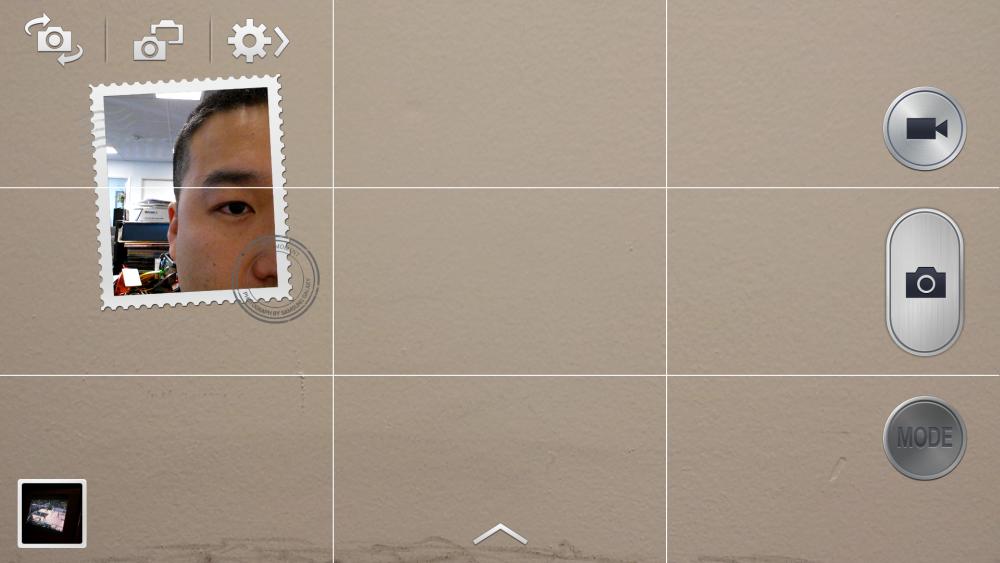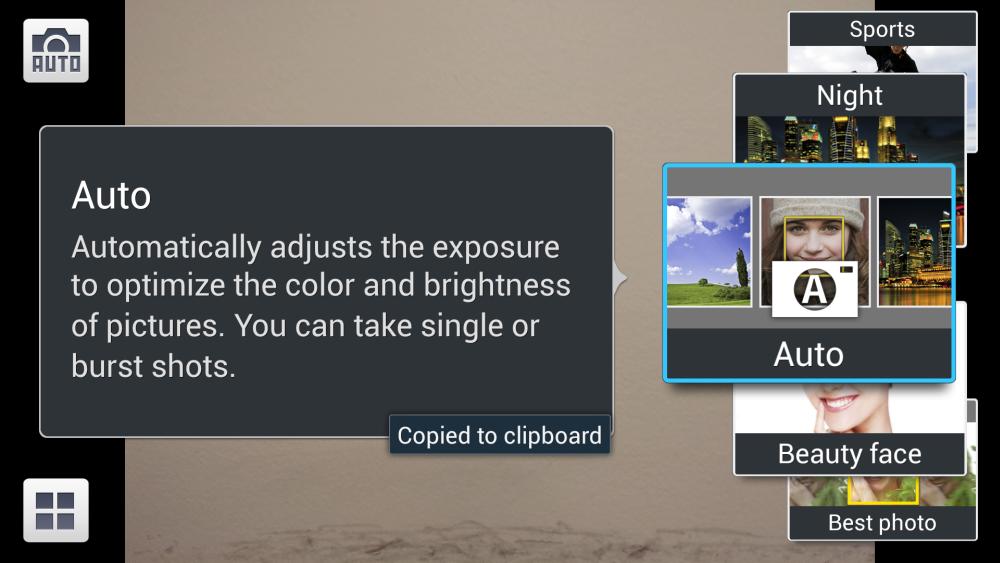This is a question that I find myself asking about any smartphone really. As a person who is interested in all aspects of photography, I can’t deny the fact that smartphones now play a huge role in capturing every second of our lives. It has become increasingly clear to me that I see less and less people now relying on point-and-shoot cameras and more and more people whipping out their smartphones to capture special moments, vacations, life events, and whatever else comes to mind. But, can a smartphone truly replace what was once a separate gadget that we had to carry around with us? Can it do everything that our old point-and-shoot cameras could do and more?
For the sake of this question, I’ll be using the Samsung Galaxy S4, one of the most popular smartphones on the market right now. Samsung has been advertising how great their camera is and all the neat little software features that are supposed to distinguish it from other smartphones. Because the Galaxy S4 is so popular, it’s probably safe to say that many of you might have this and will be using it for the exact same question that I posed.
Galaxy S4 Camera Specs
- Primary – 13 MP, 4128 x 3096 pixels, autofocus, LED flash
- Features – Dual Shot, Simultaneous HD video and image recording, geo-tagging, touch focus, face and smile detection, image stabilization, HDR
- Video – Yes, 1080p@30fps, dual-video rec.
- Secondary – Yes, 2 MP,1080p@30fps, dual video call
On paper, the Samsung Galaxy S4 has very good camera specs for a smartphone. It’s 13mp sensor is even larger than a lot of dedicated point-and-shoot cameras out there although for zoom, you are stuck with digital zoom as there is usually no optical zoom on a smartphone. Also, because the Galaxy S4 has such a huge 5-inch screen, composing images and being able to see what you are shooting will again probably be better than most point-and-shoot cameras which usually only have a 3-3 1/2 inch screen.
Galaxy S4 Software
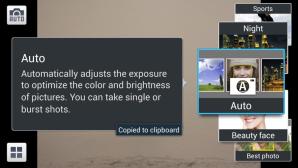 The software is where the Galaxy S4 tries to separate itself from its competition and brings it more in line with traditional cameras. The S4 allows you to adjust numerous settings just like a point-and-shoot and unlike most smartphone cameras that usually automatically handle all this for you. You can adjust photo size, metering, ISO, whether or not to have anti-shake activated, white balance, exposure value, and enabling GPS tagging. It’s these settings that make the Galaxy S4 more like a real camera and should appeal to those who like more control. Of course if you want, you can just set this all to automatic as well if you choose.
The software is where the Galaxy S4 tries to separate itself from its competition and brings it more in line with traditional cameras. The S4 allows you to adjust numerous settings just like a point-and-shoot and unlike most smartphone cameras that usually automatically handle all this for you. You can adjust photo size, metering, ISO, whether or not to have anti-shake activated, white balance, exposure value, and enabling GPS tagging. It’s these settings that make the Galaxy S4 more like a real camera and should appeal to those who like more control. Of course if you want, you can just set this all to automatic as well if you choose.
Other notable features include Auto Night Detection which automatically adjusts the camera for low light situations and Voice Command which allows you to shoot photos using your voice.
As awesome as being able to manually adjust all these settings are, I think most people would be more interested in the various shooting modes that Samsung has built into the Galaxy S4. There are 12 different shooting modes available that I have listed below.
- Auto – Automatically adjust the exposure to optimize brightness and color
- Night – Takes brighter, clearer pictures in low light without using the flash
- Sports – Takes pictures of fast movement
- Panorama – Allows for horizontal or vertical photo that are stitched together to form a larger panorama
- Eraser – Save the best image after erasing moving objects from the shot
- HDR – Merge multiple images into 1 for more dynamic range of colors
- Animated Photo – Allows you to blend a moving image with a still photograph and exports it a GIF file
- Drama – Merge multiple moving photos into a time lapsed photo
- Sound & Shot – Allows you to add background sounds to photos
- Best Face – Takes a series of 5 photos in which you can choose the best faces in each and merge into one photo
- Best Photo – Takes a series of 8 burst shots after which you select only the photos that are good
- Beauty Face – This mode allows you to enhance facial features when taking portraits
- Dual Camera – Allows you to shoot a photo using both the front and rear cameras at the same time
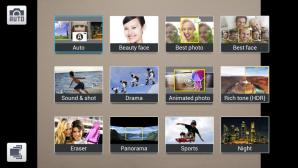 Any one of these modes should allow you to shoot in almost any situation you encounter. That’s way more than what comes on an iPhone 5, which would be automatic. In fact, that’s even a bit more than some point-and-shoots as well. Again, Samsung really went out of their way to make the camera experience here as close to a point-and-shoot as possible borrowing many of the features from their Galaxy Camera.
Any one of these modes should allow you to shoot in almost any situation you encounter. That’s way more than what comes on an iPhone 5, which would be automatic. In fact, that’s even a bit more than some point-and-shoots as well. Again, Samsung really went out of their way to make the camera experience here as close to a point-and-shoot as possible borrowing many of the features from their Galaxy Camera.
While shooting, you can even apply various photo filters and view what they can do in real time and shoot with them on. There are 13 filters to choose from and you can even apply these filters on images later if you don’t want to do it in real time.
Moving on to the video functions, again the Galaxy S4 allows you to record in HD 1080p at 30fps. There are 4 recording modes you can choose from – Normal, Size Limited for MMS, Slow Motion video, and Fast Motion video. What’s pretty cool though from a software standpoint is that you are able to shoot video whenever as there is a separate video button on the main camera interface. That means you do not need to switch between photo and video modes. Instead you can choose between either right from the main screen.
Real World Usage
There are a few ways to launch the camera on the Galaxy S4. For starters, you can launch it from the lock screen if you enable either lock screen widgets or enabling shortcuts on the lock screen. This makes it easier to launch the camera directly if that’s something you want to do. I use the camera a lot so I went this route. I find though that enabling the camera shortcut is a bit faster than trying to enable the camera as a widget. With the shortcut method, just tap and hold on the camera icon and then slide to unlock directly into the camera app.
 Accessing the camera app from the lock screen however isn’t instantaneous or as quick as you’d like it to be. There is a slight delay about a second or less when starting up the camera app. A second might not seem long, but if you’re trying to capture something that might be gone in an instant, you want something that starts up quickly. Although, this is still a bit faster than trying to start up most point-and-shoot cameras.
Accessing the camera app from the lock screen however isn’t instantaneous or as quick as you’d like it to be. There is a slight delay about a second or less when starting up the camera app. A second might not seem long, but if you’re trying to capture something that might be gone in an instant, you want something that starts up quickly. Although, this is still a bit faster than trying to start up most point-and-shoot cameras.
Starting the camera app however from the home screen is a lot faster than from the lock screen, especially once it’s already running in the background. From the hone screen, it does launch almost instantaneously which is good. I actually places the camera icon right at the bottom dock so I would be able to access it from any page I may be on in the home screen. I do this for quicker access and if I’m not carrying around a separate camera, I want easy access to the app.
Once in the app, you’ll see that the camera will orient the onscreen buttons and controls based on how you are holding the Galaxy S4. You can shoot in whatever orientation you choose. What I like about the app is that the buttons for the still camera and the video camera are both there so you don’t have to switch modes. Actually, all the buttons are in easy reach, at least the one that are important. If I hold the Galaxy S4 in landscape mode like a real camera, I can easily access the mode, photo, and video button with my thumb. However the slipping of the cameras, dual shot mode, and the settings I have to use my other hand.
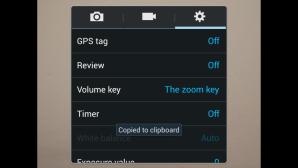 For those who want a physical shutter button, you can actually set the volume button on the S4 to act as a shutter release button. You do so by heading over to the settings menu and adjusting the function of the volume key. In my case, I set it as the camera key. If you don’t want it set as this, you can also have it set as the video record key or even as the zoom key. I will say, it works surprisingly well as the zoom key and may be a lot easier to zoom in this way instead of using the usual pinch to zoom method.
For those who want a physical shutter button, you can actually set the volume button on the S4 to act as a shutter release button. You do so by heading over to the settings menu and adjusting the function of the volume key. In my case, I set it as the camera key. If you don’t want it set as this, you can also have it set as the video record key or even as the zoom key. I will say, it works surprisingly well as the zoom key and may be a lot easier to zoom in this way instead of using the usual pinch to zoom method.
Speaking of the zoom, it is a 4x digital zoom. I’m not usually a fan of digital zooms, but it’s usable here. I would recommend using it often, but it’s decent and that’s probably because of the 13mp sensor. When using the, whether it be with pinch-to-zoom or the volume key, the zoom goes up or down by increments of x0.1. So you can go anywhere from x1.0 to x4.0 and anywhere inbetween. Zooming however is not a smooth affair like it is on a point-and-shoot. With this, you can actually see it stepping up or down every x0.1 increment. I will say it is pretty fast though to get from x1.0 to x4.0. If you use the zoom a lot, I recommend assigning the volume key for zoom duty as it is much easier than trying to use your thumbs on the screen to adjust zoom.
Now on to the very important topic of focusing. One of the main features people look for in a point-and-shoot camera or any camera for that matter is how quickly it can focus on a subject. No one likes waiting for the camera to focus and no one likes blurry images. That’s why how fast a camera can focus is very important. In relation to the Galaxy S4 though, focusing speeds are only just decent. They aren’t terribly bad but they aren’t what I would call lightning quick either. It actually varies depending on how far or close an object is or what the camera was previously focused on. There were instances when it would focus really fast and other instances when it would sort of just hang there and hunt for the proper focusing. But, I’ve used my fair share of point-and-shoots and I can tell you that some of those aren’t any better either. At least with the Galaxy S4 you can choose where you want it to focus by using the touch screen and tapping on an area. You can’t do this with a lot of point-and-shoots unless they have a touch screen too.
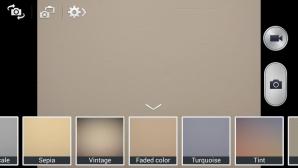 Lastly, there are a few advantages that the Samsung Galaxy S4 has over pretty much every point-and-shoot out there. For starters, we’ve all hear of WiFi enabled cameras. Well, with the Galaxy S4, because it is a smartphone, you don’t need to be at a WiFi hotspot to upload photos to social networks. Because you will be connected through your carrier’s data network, you can upload photos when ever you want to any social network you choose or any photo sharing site. On top of that, because this is an Android phone, you are able to take advantage of the Google Play Store and download any number of photo editing apps out there such as Snapseed or Aviary. That means you can edit photos right on your device instead of having to transfer photos from your camera to a computer and then editing it on there. It’s a huge advantage especially for those who just want to take photos and upload them directly to a social networking / photo sharing site.
Lastly, there are a few advantages that the Samsung Galaxy S4 has over pretty much every point-and-shoot out there. For starters, we’ve all hear of WiFi enabled cameras. Well, with the Galaxy S4, because it is a smartphone, you don’t need to be at a WiFi hotspot to upload photos to social networks. Because you will be connected through your carrier’s data network, you can upload photos when ever you want to any social network you choose or any photo sharing site. On top of that, because this is an Android phone, you are able to take advantage of the Google Play Store and download any number of photo editing apps out there such as Snapseed or Aviary. That means you can edit photos right on your device instead of having to transfer photos from your camera to a computer and then editing it on there. It’s a huge advantage especially for those who just want to take photos and upload them directly to a social networking / photo sharing site.
Of course you don’t have to use 3rd party editing tools as the Galaxy S4 comes with its own photo editor that is surprisingly robust.
Image Quality
One of the main issues with smartphone cameras is that they can be quite inconsistent with quality and a lot of them aren’t even close to point-and-shoot quality. The Samsung Galaxy S4 isn’t one of those. If you read the specs above, they are pretty equal to that of most point-and-shoots. That means that theoretically, the Galaxy S4 should provide photos that are equally as good as what you’d get with a point-and-shoot.
As you can see from the above image, color reproduction is very good and bright. You also get a good amount of blurring in the foreground and background with the closeup shots which lovers of bokeh will like.
This photo above again shows how well the Galaxy S4 captures details and colors. Again we can see the range of colors the Galaxy S4 can capture and using the auto white balance mode yields correct values. You may not see it here but there really is a lot of detail in this photo. Since this photo was resized, it doesn’t convey the amount of detail you would see in the full resolution image. For those, I suggest checking out my Flickr page here in which I have uploaded a lot more sample photos you can check out.
Final Thoughts
In terms of replacing a point-and-shoot camera with a Samsung Galaxy S4, I can see that as a possibility. It can do most of everything a point-and-shoot can do and image quality is on par with most. Sure there are a few things that point-and-shoot camera still do better, but for the average person, you can get away with just using the Galaxy S4. What I like is that you can have the camera app set to automatic for simple, thought free operations which most people will probably leave it at. For the more advanced users, they can actually dig through the settings and adjust things like ISO, metering, and exposure value which is usually reserved for real cameras.
On top of that, you are always connected which means any photos you take can be automatically uploaded to a number of social networking and photo sharing sites via the share feature that is built in, or using whatever native app from the Play Store. And as stated above, because you have access to the Play Store, you can download any number of wonderful photo editors that are on there to make your photos even more special and add some creative flare to them and all while on the go.
It’s at a point now where smartphones have cameras that are almost or just as good as dedicated point-and-shoot cameras under most normal circumstances and honestly, most don’t even need that extra camera anymore. I can even say that personally, I don’t carry around an extra camera with me much anymore when I’m out unless it’s for something like a major vacation where I want more professional looking shots or a special event where I need more range and control. Other than that, I use my smartphone a lot for just capturing everyday stuff and it does that just fine.



